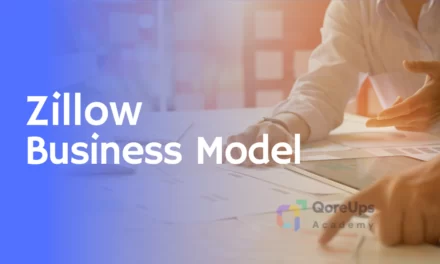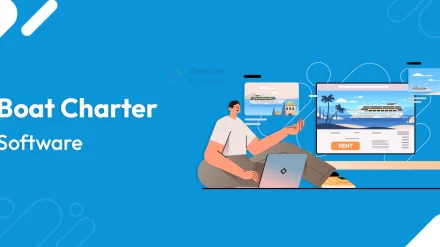When you have a perfect online B2B marketplace idea for your business, it’s time for you to select the right marketplace business model.
A clear marketplace business model framework must be defined for a new online marketplace platform to support the creation of a sustainable B2B marketplace. It should effectively convey the features of its new business to partners and internal stakeholders.
Make advantage of the business model canvas to design a B2B marketplace. Your 2 sided marketplace business model becomes clearer to you as a result.
Business Model Canvas
On a single sheet of paper, could you make a list of all the essential components required to create, oversee, maintain, promote, and sell a product? It is not possible in reality, but with a marketplace business model canvas, it is possible.

Photographer: Vignesh Palanivel
Copyright: QoreUps
Credit: QoreUps
By using the business model canvas method, you may push yourself to focus on the aspects of your product that are most important from a strategic perspective.
A business model canvas is a one-page overview of the high-level strategic details required to effectively launch a marketplace. Below is a list of the nine essential components of the business model canvas that will assist you in creating a 2 sided marketplace business model.
Customer Segments
Customer segmentation is the technique of grouping customers based on characteristics like age, gender, hobbies, and purchasing patterns. When creating your customer segments, think about the following:
- To whom are we resolving the issue?
- Who will appreciate my value offer, and why?
- Does my value proposition appeal to males, women, or both?
- Does it appeal to teens or young adults?
How big your market is and how many people make up your customer segment are additional factors to assess and comprehend. From both a micro and macro standpoint, this will assist you in understanding your market.
Establishing customer personas for each of your customer segments is a great way to begin understanding your target market.
Value Proposition
The most crucial component of the marketplace business model canvas template, in my opinion, is the value propositions. The core service that a company wants to provide to its customers is determined by its value proposition.
The value proposition of a business is the primary operating factor. Let’s take Spotify, and Airbnb as Marketplace business model examples. Spotify simply describes its target and offering in its value proposition, “Music For Everyone.” Spotify aspires to become a 2 sided music streaming marketplace with a wide range of musical genres.
Consider the following while evaluating value propositions:
- What particularly are you offering to the customers through your business?
- What needs are being met by your business, and what problem are you seeking to solve?
- How can you provide a unique offering that fits the needs of each of your customer target segments (price, quality, design, status, etc.)?
Customer Relationships
We understand our value proposition and have created personas to help us better understand our customer segments, or “customers,” but what exactly is your connection with them?
How a company interacts with its customers is referred to as customer relationships. Here are a few instances to make customer relationships:
- In-person (one-to-one)
- Third-party contractors
- Online
- Events (one-to-many)
- Phone
Making a User Journey Map of how your consumers engage with your business is a tremendously beneficial step. This makes it clearer what your customer’s points of interaction are and how you relate to them. You may use this to uncover possibilities for automation as well as to start defining your operations as a business.
Channels
It is said that channels are the ways in which a customer interacts with your company and enters the sales cycle. The marketing strategy for your company often includes coverage for this.
When choosing how to contact your consumers, it’s a good idea to ask the following questions:
- How will we communicate our value proposition to our target market?
- What about our clients?
- Do they utilize social media?
- Are they operating a vehicle as they listen to the radio?
- Do they attend a gathering or a conference?
Key Activities
The key actions your company/product takes to fulfill the value proposition for your customers are known as your business’s key activities.
Inquire about the following while deciding the key activities:
- How does the company go about delivering the value it promises to the client?
- What resource is utilized?
- Time?
- Expertise?
- A product’s distribution
- Strategy?
- Give your human and/or material resources?
- What steps are necessary for value exchange between you and your staff?
Key Resources
The next step is to consider what actual resources are required to carry out the main business operations (actions).
Key refers to the tools that your company needs to operate.
Practically speaking, the following resources are required to carry out the acts or activities of your business:
- Office space
- Computers
- Hosting
- People (staff)
- Internet connection
- Electricity
Key Partners
Your list of key partners should include any additional outside businesses, vendors, or parties you may require to complete key tasks and provide value to clients.
This leads to the question “Who else do I need to rely on to accomplish it if my business can’t fulfill the value proposition alone?”
If I sell goods to consumers, for instance, I could require a nearby baker to deliver fresh bread to my business.
They play a crucial role in helping my company deliver the value it provides to its customers.
Revenue Streams
The process through which your company turns your Value Proposition, or your solution to the customer’s issue, into a monetary benefit is known as generating revenue streams.
It’s crucial to comprehend how to price your products and services. So that they alleviate the agony of the customer’s problem in exchange for the pain of the purchase.
How do you make money? Is the only thing that should revolve around your thinking. But when designing the revenue stream consider your customers and their aspects.
Cost Structures
The monetary expense of running a business is referred to as your business cost structure.
- How much does it cost to do the primary tasks for my company?
- What are the costs associated with my important partnerships and resources?
- How much will it cost to deliver the benefits I promise to my users and customers?
- Does operating a business come with additional expenses?
- Legal?
- Insurance?
- How much does my business cost?
- It’s crucial to assign a cost to your time in terms of money.
- How much would hire you set you back?
- How much money do you lose out on by running your business?
The most important step of the 2 sided marketplace business model is to create your own Business Model Canvas. So far now, you have seen the 9 essential elements in the business model canvas. Use these 9 elements in your business plan to get a perfect marketplace business plan. By using a tool like the Business Model Canvas, your online marketplace platform business may come together around a crystal-clear illustration of where it is now and where it wants to go. Here are some tips for strengthening your business model.
4 Tips To Design A Marketplace Business Model In 2025
Most entrepreneurs place their bets on the core concept of the product, without which the firm cannot exist. It is the fundamental reason why most business beginnings fail.
They are unable to think about the business model marketplace corporations are supposed to follow because of their great dedication to this service or product. The business model is typically developed hastily or without sufficient planning, with the sole intention of selling the service or product.
Although successful businesses rarely exploit the principal concept market or the basic marketplace business models that are widely used in the sector. Instead, they make sure that before the final version is delivered, the service or product goes through multiple recapitulations.
If businesses evaluate numerous potential business model canvases before settling on one, they become more manageable. Also, consider the following tips while designing the business model.
High-level
Start by creating a high-level business model map that includes only the most crucial and significant elements.
Make sure your criteria are as clear as you can so that after three months have passed, both you and others will still understand what they imply. divvy up more difficult design requirements.
Connect the building blocks
Connect the pieces: a customer segment and a revenue stream are essential for any value proposition! Take a step back once everything is written on the board. Take a quick break. You missed anything, right? Something missing?
It is preferable to choose a different color for each client section in the Post-it notes you employ if you have many consumer segments. You may then quickly determine if there is a value proposition and a revenue stream for each area.
Current state
Don’t mix up current ideas with suggestions for a different state, and don’t mix up separate departments!
You can encounter many value propositions and business models if you work for a large corporation. In that circumstance, request that each department create a business model marketplace for itself. Afterward, you may evaluate them.
Review
Make sure each client group has a value offer and an income stream by taking a step back and examining the situation. Verify that everything supporting the right side of the canvas is required on the left side. The rest is unnecessary.
For every query, give your business model a performance score (0 being terrible and 10 being excellent):
- What percentage of your clients are kept from leaving because of switching costs?
- How scalable is your marketplace business model?
- Are recurring sales generated by your company model?
- Earnings come before expenses, right?
- What percentage of the task is delegated to others?
- Is there built-in protection against the competition in your company model?
- Your company strategy is based on what cost structure?
Well, now you know how to build an online marketplace business model. So, create a marketplace with a perfect business model.



![10 Best Free Apartment Rental Software [2025]](https://s3.us-west-2.amazonaws.com/landing-qoreups.com/academy/wp-content/uploads/2025/04/04114952/10-Best-Free-Apartment-Rental-Software-2025-440x247.webp)


